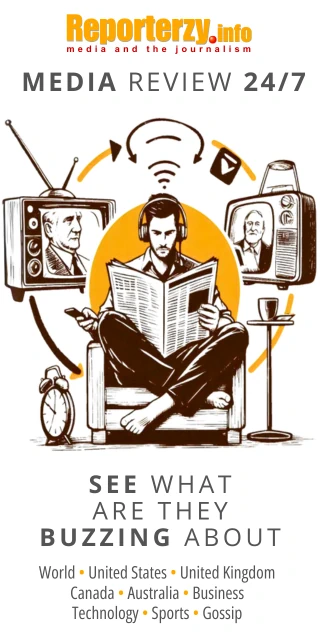 illustration: DALL-E
illustration: DALL-EThe phenomenon of fake news, especially strong in the age of social media, presents a tough choice for governments and citizens. Should we protect freedom of speech at all costs, or impose restrictions to shield the public from manipulation? The report Explanatory factors for the dissemination and control of fake news in the Latin American context, published in the journal Humanities and Social Sciences Communications, seeks to answer this question.
The report was authored by four researchers from the University of Santiago de Compostela: Paulo Carlos López-López, María Pereira-López, Erika Jaráiz-Gulías, and Nieves Lagares-Díez. Their analysis is based on data from the 2023 Latinobarómetro survey, covering six countries in the region: Argentina, Brazil, Chile, Colombia, Mexico, and Peru.
The researchers aimed not only to describe public opinion on fighting disinformation but also to identify the factors influencing citizens’ support for regulating online content—even at the expense of freedom of speech. As it turns out, the decision to support fake news control is closely tied to political context, trust in institutions, and personal ideological beliefs.
Majority supports control, even at the cost of freedom
The authors analyzed data from the 2023 Latinobarómetro survey, which included Argentina, Brazil, Chile, Colombia, Mexico, and Peru. The results were clear: in each of these countries, the majority supported controlling fake news—even if it meant limiting freedom of expression.
| Country | Support for Fake News Control | Support for Freedom of Speech |
|---|---|---|
| Colombia | 70.4% | 29.6% |
| Chile | 68.5% | 31.5% |
| Brazil | 66.7% | 33.3% |
| Peru | 63.4% | 36.6% |
| Mexico | 59.5% | 40.5% |
| Argentina | 61.9% | 38.1% |
The highest support for regulation was seen in Colombia, which the researchers link to recent political crises and protests, where fake news spread widely. In contrast, citizens in Mexico and Argentina were more likely to defend freedom of speech, possibly due to a stronger tradition of liberalism or opposition to current leadership.
Social media under scrutiny
Citizens were clear about where they believe fake news spreads the most:
- 75% of Brazilians said fake news most often appears on social media.
- Over half also pointed to television as a source of disinformation.
- Radio and print media were seen as relatively more reliable.
This shows that how people view disinformation depends on their trust in the medium. In Mexico, 12% of respondents said the press contains no fake news—the highest result in the region.
Social profile of those who support information control
According to the report, a typical supporter of fake news control is someone who:
- voted for the ruling party,
- is unhappy with democracy,
- has low political interest,
- prefers authoritarian governance,
- comes from a lower social class.
In Brazil, 40.7% of the variation in responses could be explained by these variables. In Chile, it was 40.8%. In Mexico, 41%.
Education does not shield against support for censorship
It may be surprising that higher education levels don’t always lead to stronger support for freedom of speech. In some countries—like Peru and Chile—people with higher education were more likely to support fake news control. In Brazil, the gap between education levels reached 16 percentage points.
There was also an opposite trend: in Argentina, those with higher education were more likely to defend freedom of expression. This shows that the impact of education is highly contextual and depends on the local political situation.
Political ideology: surprising findings
Contrary to stereotypes, it`s not just the political right that opposes information control. In Argentina and Brazil, it was the far left that more often supported fake news censorship. This is linked to current political tensions—such as Milei’s election or Bolsonaro’s controversial presidency.
In Colombia, those with centrist views were more likely to favor restrictions. Mexico and Peru showed a different pattern: the further to the right, the more support for information control. This means ideological divides are not universal—they depend on local context.
Media use and online behavior data
The analysis also looked at specific platforms and their users:
- Users of Instagram in Brazil and Argentina were more likely to support information control.
- In Mexico, using YouTube, Instagram, and TikTok was linked to greater support for freedom of speech.
- Those who believed social media has a positive impact on politics were less likely to support control.
These findings show that it’s not just the media itself, but also how people perceive its role in democracy that shapes their views on censorship and freedom of information.
The report also describes the case of Brazil, where a court ordered the shutdown of platform X (formerly Twitter) for failing to remove accounts spreading disinformation and hate speech. The decision affected over 40 million users. According to an AtlasIntel poll, Brazilian society was nearly evenly split on the matter—with a slight edge to opponents of the decision.
***
The study was based on Latinobarómetro 2023 data, including 7,204 respondents from Argentina, Brazil, Chile, Colombia, Mexico, and Peru. Logistic regression analysis and descriptive statistics were used, considering 44 variables grouped into four blocks: demographic, political, cultural, and media-related. The goal was to identify which factors influence citizen support for fake news control at the expense of freedom of speech. Full results are available at https://www.nature.com/articles/s41599-025-05100-7
COMMERCIAL BREAK
New articles in section Media industry
Investigative journalism in Europe. Newsrooms face pressure
KFi, Newseria
Media and political representatives point to the difficult situation of investigative journalism in Europe. Newsrooms are reluctant to invest in this segment due to high costs and the large amount of time and effort required. Most of all, however, they fear legal proceedings.
Energy under attack. Disinformation threatens Poland’s power transition
KFi
One in five online messages about energy may be fake. Between 2022 and 2025 nearly 70,000 publications warning and condemning disinformation in this strategic sector were recorded in Polish media. They generated a reach of 1.19 billion impressions.
AI changes the game. A new face of internet search
KFi
Half of consumers in the US already use AI-powered search. By 2028, purchase decisions worth $750 billion will be made through AI. These findings come from McKinsey’s report "Winning in the age of AI search".
See articles on a similar topic:
Influencers and social video rule information. Digital News Report 2025
Krzysztof Fiedorek
Seconds of vertical clips set the future of news. TikTok, YouTube and an army of influencers pull viewers away from TV sets and newspaper pages. Whoever masters this new pulse seizes not only attention but also control of the story.
Radio, Streaming, and Podcasts. Total Audio 2024 Report about Poland
Krzysztof Fiedorek
Audio content is a daily companion for Poles. According to the Total Audio 2024 study conducted by Adres:Media on behalf of the Radio Research Committee, as many as 90% of respondents listen to audio content at least once a week, and 80% do so daily. The average listening time is nearly five hours per day.
YouTube redefines viewer engagement. Goodbye to returning viewers
KFi
As many as 30% of internet users now turn to YouTube as their main news source, and 65% consume news in video form. Now the platform is shaking things up. Reach still matters, but engagement is what really counts.
Digital Newspapers in Poland
Bartłomiej Dwornik
The three largest distributors of digital press editions in Poland sell around 270,000 e-magazine copies monthly, according to Money.pl analysis. Digital press is mostly read by experienced internet users, managers, and emigrants.






























